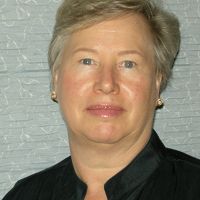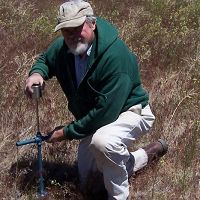Hunsaker & Johnson, 2011
Nitrogen Contents and Fluxes in Sierra Nevada Forests of California.
Hunsaker, C.T., Johnson, D. (2011)
Fall meeting, American Geophysical Union, December 2011. Abstract B13G-0656
-
Sierra, INVESTIGATOR
-
Sierra, INVESTIGATOR
Abstract
Forest health and water quality depend on understanding water and nutrient budgets; this understanding is critical to inform forest restoration in California. The Kings River Experimental Watersheds (KREW) were established to characterize nitrogen (N) budgets before, during, and after tree thinning and prescribed fire to restore forests. The KREW watershed complex receives moderately high atmospheric inputs of N. Quantitative soil pit sampling shows that there are some differences in soil properties between the high elevation Bull site and the lower elevation Providence site. Soils are relatively high in inorganic N; however, N appears to be efficiently mobilized within the ecosystem, allowing very little loss via soil leaching or streamflow. We are measuring N deposition amounts using different techniques in an effort to compare methods and accurately quantify deposition in this area of steep terrain and dense forests. Five years of using passive samplers during the summer months show that the concentration of N components in air is moderate to moderately high. The Providence site experiences higher levels of both HNO3 and NH3 (summer averages 2.4 and 4.3 μg m-3) than the Bull site (1.2 and 4.2 μg m-3). Background levels of HNO3 in summer should not exceed 0.4 μg m-3, while those for NH3 in remote mountain locations in North America should be less than 1 μg m-3. Above-ground ion-exchange resin columns (2006-2009) show that total inorganic N deposition under the forest canopy ranged from 5.6 to 11.3 kg ha-1 in two forested areas of the Providence site with slightly more NO3- than NH4+. A smaller type of resin collector placed on the ground at 470 locations measured inorganic N deposition ranging from 5 to 11 kg ha-1 yr-1 during the 2004-2008 sampling period in the Bull watersheds and from 3 to 10 kg ha-1yr-1 in the Providence watersheds. Fluxes of inorganic N in the shallow mineral soil varied considerably by year, ranging from 2-3 kg ha-1 yr-1 in both Bull and Providence watersheds in 2004 to 6-16 and 6-20 kg ha-1 yr-1 in the Providence and Bull watersheds, respectively, in 2008. Reasons for the large inter-annual variation are still under investigation, but point to the need for good controls and background data in order to properly assess treatment effects. Water quality of the streams is quite good as one would expect from mountain headwaters where no new land disturbance has occurred for years. Nitrogen is seldom above the detection level (0.05 mg L-1) in the Bull site, and the Providence site has streams with a small spring nitrate pulse. Pathways of streamflow were determined for KREW using geochemical tracers (Ca2+, Mg2+, K+, and Cl-) and endmember mixing analysis. Three endmembers were determined: near-surface runoff from snowpack and spring rainstorms, fall rainstorm runoff, and baseflow. Near-surface runoff contributed more than 50% of streamflow on average at six catchments, whereas baseflow made up greater than 60% of streamflow at the other two catchments. Fall rainstorm runoff contributed less than 6% on average. This information about hydrologic processes should assist in understanding both water yield and nutrient processing after land treatments.
Citation
Hunsaker, C.T., Johnson, D. (2011): Nitrogen Contents and Fluxes in Sierra Nevada Forests of California . Fall meeting, American Geophysical Union, December 2011. Abstract B13G-0656.
Explore Further


